

|
· Features: · Symptoms most commonly C7 (60% ) and C6(25%) roots · As a result of a soft disc herniation in younger patients or hard disc (osteophytes) in the older patient |
|
This typically occurs as a result of either a posterolateral prolapsed intervertebral disc in a younger patient or as a result of degenerative osteophytic bone spurs in the older patient as a result of cervical degeneration or spondylosis. Occasionally the pathology may be as a result of cervical instability or trauma with subluxation or facet fracture dislocation.The most commonly affected nerve roots are C7 (60%) with middle finger numbness and C6 (25%) with thumb numbness.
Except in cases of trauma or instability, treatment usually commences with conservative modalities such as physical therapy for cervical traction and paraspinal muscle relaxation techniques. Should conservative treatment methods fail then surgery may be indicated.
Surgical Decompression may be from an anterior approach, classically an Anterior Cervical Discectomy and Fusion (ACDF) or more recently via an anterior decompression followed by a Artificial Disc Replacement (ADR). Posterior decompression with a posterior foraminotomy is another option. |
|
CERVICAL RADICULOPATHY |
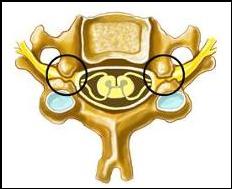
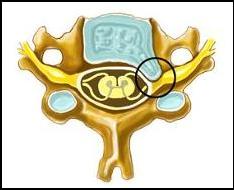
|
CERVICAL DISC PROLAPSE |
|
CERVICAL SPONDYLOTIC RADICULOPATHY |
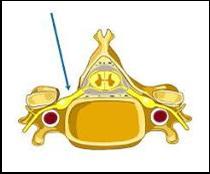
|
POSTERIOR FORAMINOTOMY |
|
RADIOGRAPHS SHOWING UNCOVERTEBRAL JOINT OSTEOPHYTES |
|
OBLIQUE RADIOGRAPHS SHOWING SIGNIFICANT FORAMINAL STENOSIS |
|
MRI SHOWING FORAMINAL STENOSIS AND ROOT COMPRESSION |
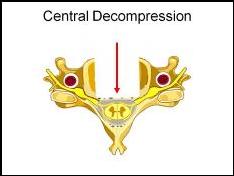
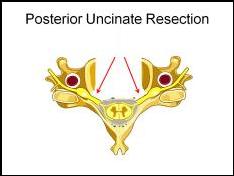
|
ANTERIOR DECOMPRESSION AND UNCOVERTEBRECTOMY |
|
Copyright © 2008 Spine Care Hong Kong |

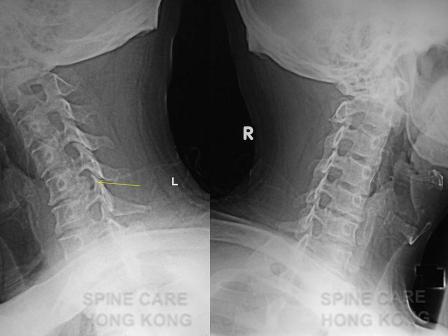
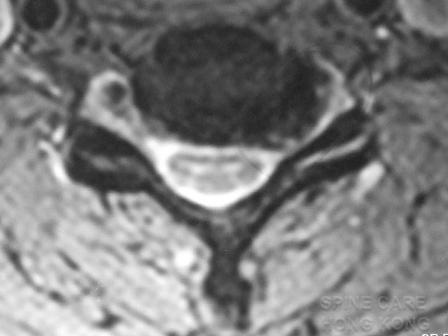


|
SPINE CARE HONG KONG |
|
ACCURATE DIAGNOSIS, STRUCTURED TREATMENT |
